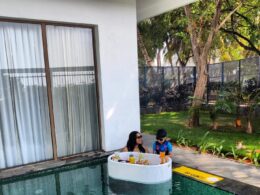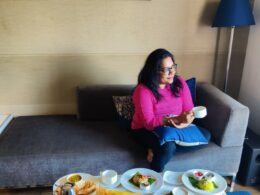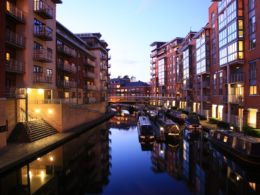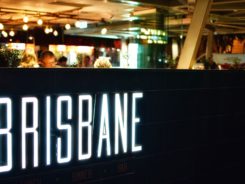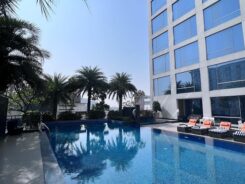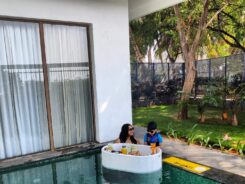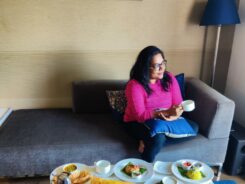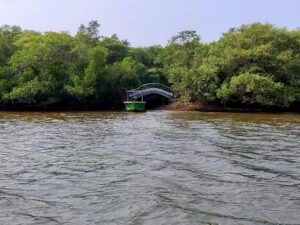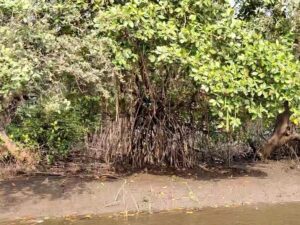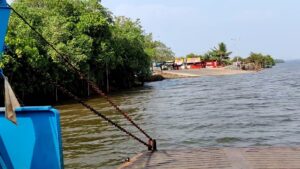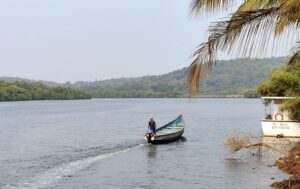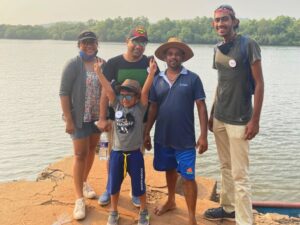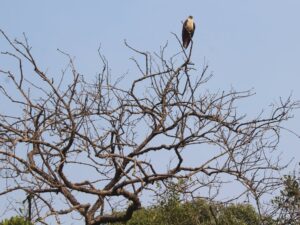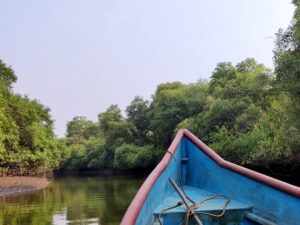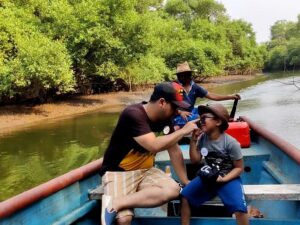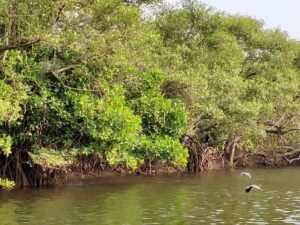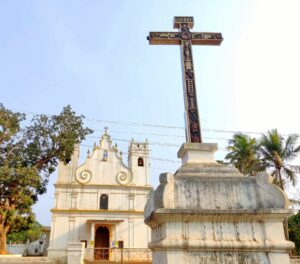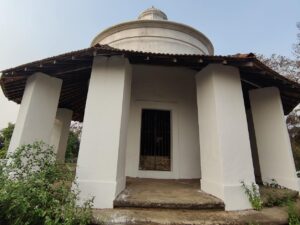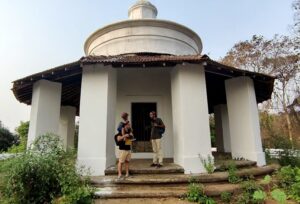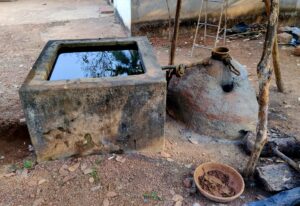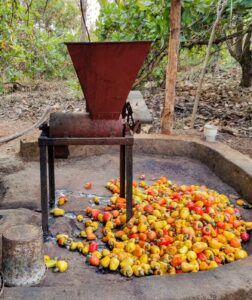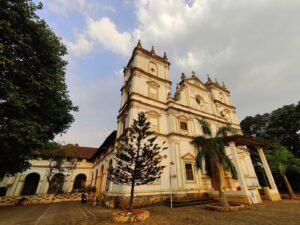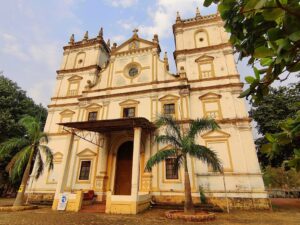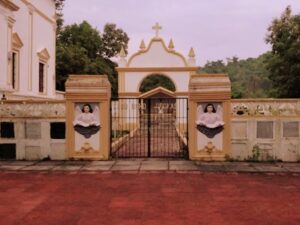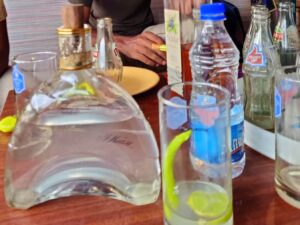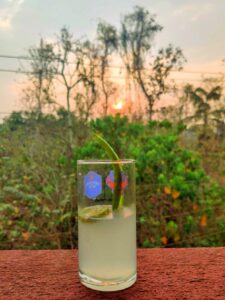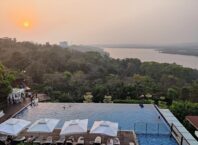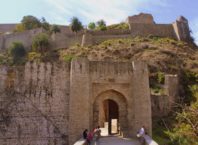Goa’s claim to fame is mostly because of its sunkissed beaches but what is not common knowledge is that Goa has an archipelago of 17 islands that are rich in flora and fauna and are enwrapped in some fascinating history and folklores. Surrounded by the Mandovi river, Chorao Island, the largest of the 17 islands is truly a hidden gem and untouched by mass tourism. Home to the offbeat Salim Ali bird sanctuary along its western tip, Chorao island is not just naturally scenic but seems like an escape into a sleepily quaint, laid-back and picturesque village from a different era with its Portuguese-styled manors and churches.
The history of Chorao island is quite interesting and goes back to the third-fourth century when Indo-Aryans migrants came to settle there. According to local tales, there were only 10 families that initially settled here dominated by the Shenvi Brahmins. Legend says, Chodan was its original Konkani name and the island was created by the jewels thrown away by Yashoda, Lord Krishna`s mother.
As one of the first conquests of the Portuguese in Goa, the island was gradually christianised by Jesuits around 1510 – 1561. The rich nobility amongst the Portuguese settlers took notice of Chorao island soon built lavish buildings and villas and the island became known as “Ilha dos Fidalgos” (Island of Noblemen). You will still feel the mix of Portuguese and Brahmin culture as today there are many communities living in harmony in Chorao. The island is also believed to have had two strong fortresses to protect itself from attacks of enemies including the Marathas however they were abandoned and now lay in ruins.
I first heard about Chorao island during our recent staycation at DoubleTree by Hilton Goa Panaji and we were quite excited to know that they had planned a trip to Chorao island with SoulTravelling Tours. The only way to reach Chorao island is via a ferry boat that departs from Ribandar jetty on the mainland about 3 km from Panjim. The boat is large enough to accommodate two-wheelers and even four-wheelers and takes about 20 minutes to reach the jetty on the island. Our boat ride remained uneventful however it gave a glimpse of the mangrove forest that inhabits Chorao island as part of Salim Ali bird sanctuary.
Safely back on land, we drove through the trafficless lanes of Chorao island and it was about ten minutes from the jetty that we reached the backwater. Soon we saw a small local motorboat arrive with a man in a hat who waved to us.
Our tour guide introduced him as Uday, the “Birdman of Chorao”, the most popular boatman and the best birdwatcher from Chorao. It was fascinating to know how Uday had helped promote birdwatching activities at Charao island and spending his spare time keeping the river clean. Uday smiled shyly hearing all the praise and my son at once took to him.
The tour through the backwaters surrounded by the lush green mangrove took about an hour during which we saw many birds but were unable to spot any crocodiles. Uday proved to be an excellent birdwatcher pointing at exotic birds much before our eyes could catch them.
A ride through the mangroves is an alluring time for any nature lover or bird enthusiast. The calmness as we wandered around the backwater to spot some more birds was just unparallel. Chorao island is indeed untouched by the mad rush of tourists that you usually see in North Goa and it feels that you have escaped to a different world. The mangroves soon gave way to the fields and village houses and but the aura remained quaint and the feeling of touring vintage Goa did not fade away.
The boat ride was very relaxing as the evening was progressing and most of the birds were flying back to their homes. However, would recommend doing this trip early morning as suggested for bird watching tours when the lighting is better and there are more chances to spot birds.
After a heart fill of bird spotting, we were back and it was time to bid goodbye to our boatman. We followed our tour guide again through the narrow roads through trees and agricultural plots. I spotted a pretty-looking church in white and we took a stop for a quick picture.
Our guide explained that the original church called Our Lady of Grace Church (Nossa Senhora da Graça) was built in 1551 and during Portuguese times, this church was the center for the Feast day attracting people from near and far.
Another interesting bit of history that got lost in time is Real Colégio de Educação de Chorão a Catholic seminary that was built in 1661 to teach students free of cost by the state to work in the service of the Missions. Exactly how the seminary came to an end is still a mystery, however, as per our guide it was abandoned during the epidemic and some parts caught fire and got destroyed.
But strangely, what remains today of the Charao seminary are a few ruined walls reminding of a glorious structure and the revived chapel of St. Jerome at top of a small hill that overlooks the Mandovi river spread with mangrove forests.
On our trek back from the chapel, our guide stopped at a shed that had a storage tank and an apparatus that looked like a large pot in the ground. Looking closely, I saw a heap of fermented cashew apples and guessing from the foul smell thought that this was probably how Feni, the local spirit of Goa was produced locally.
Our guide added that the first distillate of this process is called Urrack which is locally stored and drank in celebration. The second or third distillate is Feni which is also available in stores commercially. He promised to take us on Urrack and Feni tasting at the end of the tour.
Our next stop was St Bartholomew’s Church built in the year 1569 by the Religious of the Society of Jesus. The church dedicated to St Bartholomew who was one of the twelve apostles of Jesus Christ celebrates the feast of ‘Novem’ that pays homage to the saint with regard to farming traditions. The architecture of the church is classic Neo-Roman architectural style with multiple spires but still emanates an aura of old grandeur which is quite impressive.
The church has a cemetery that was closed but I noticed the boundary wall was covered with headstones dating back to as old as the 16th century. On enquiring, our guide clarified that the cemetery reuses the burial plots in a very unique manner.
Our last stop was an absolute local and unique experience sitting in a local bar having Urrack and Feni just like friends enjoying a drink at the end of the day watching the sun go down. Urrack or Urak is a rarely-known cousin of Feni owing to its seasonal availability and extremely short shelf life.
The drink is prepared and consumed locally only during summers and is said to keep fever and cough away as per local belief. And you won’t be able to experience it easily unless you have local friends in Goa with cashew estates.
Our guide prepared a special concoction with Urrack, chilled Limca topped with a green chilli cut half and a slice with lemon. And trust me it was the best possible ending to our tour of Chorao island, a wonderland steeped in history, culture and nature.


